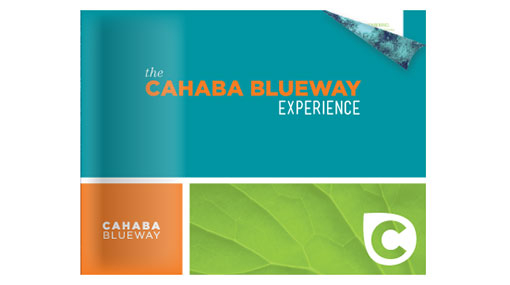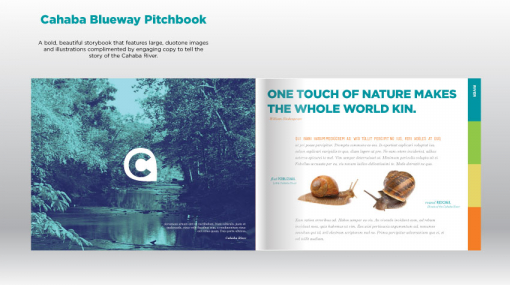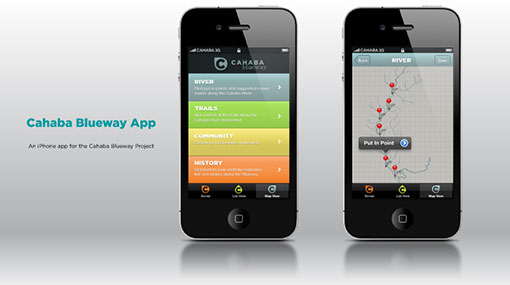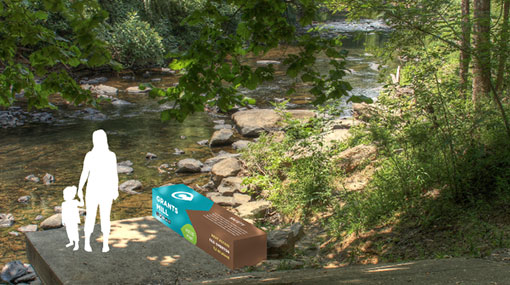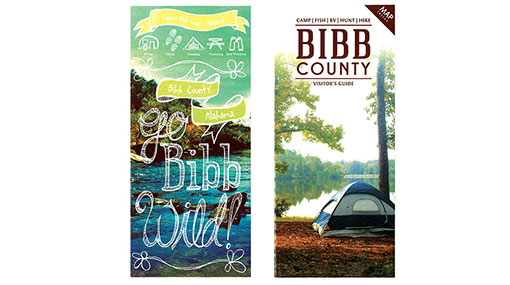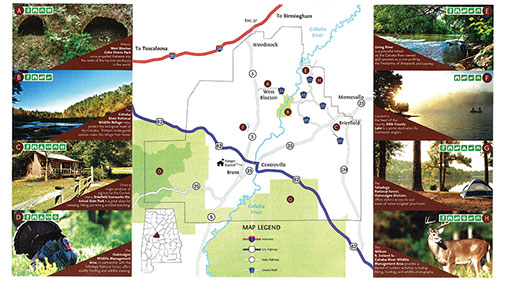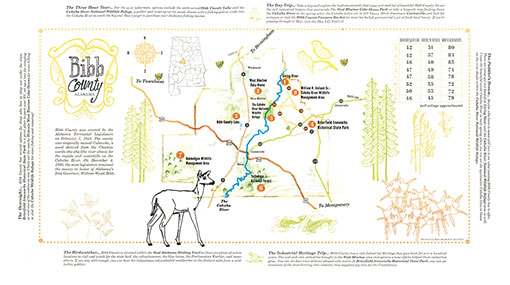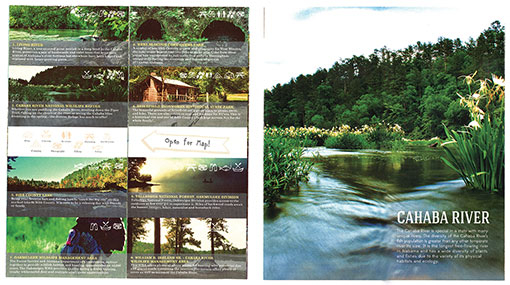Designing Solutions to Community Problems
By Charles Buchanan
 UAB graphic design professor Doug Barrett, left, with design students Jennifer Waycaster, Samantha Gibbons, Amy Clark, and Daniel Twieg at the Cahaba River. Barrett's students have designed everything from brochures to apps to draw attention to the Cahaba and rural Bibb County as part of the Design for Good initiative.
UAB graphic design professor Doug Barrett, left, with design students Jennifer Waycaster, Samantha Gibbons, Amy Clark, and Daniel Twieg at the Cahaba River. Barrett's students have designed everything from brochures to apps to draw attention to the Cahaba and rural Bibb County as part of the Design for Good initiative.
Can graphic design save a river—and a region? Doug Barrett, M.F.A., UAB assistant professor of graphic design in the Department of Art and Art History, and his students have laid out a plan to do just that, creating logos, brochures, signage, and more to draw attention to the Cahaba River and surrounding communities. And it seems to be working. A campaign they created last summer in partnership with the economic-development organization >Alabama Engine won a 2013 Ideas That Matter grant from Sappi Fine Papers—one of only 13 awarded to designers nationwide to help them create and implement print projects for charitable causes.
“Graphic design is more than mere styling,” Barrett explains. “Good design is doing deep research and creating meaningful concepts and stories around products, ideas, and initiatives that connect with consumers on an emotional level.” That deep research, known as “design thinking,” is increasingly used as a tool to develop solutions to social issues, he adds. The American Institute of Graphic Arts has embraced design thinking in its “Design for Good” initiative, which has inspired the students’ projects.
Brainstorming a Blueway
The winning designs for the Cahaba originated in an independent study course involving graphic design majors Amy Clark, Samantha Gibbons, Daniel Twieg, and Jennifer Waycaster. The four developed an entire branding campaign for the Cahaba Blueway project, a proposed “trail” for canoers and kayakers that stretches the length of the river. The brainstorming, development, and review process involved faculty and students from the University of Alabama, Alabama Engine, and local advertising agency Cayenne Creative. “It was an incredible opportunity for our students,” Barrett says. “They were able to work with top professionals and learn firsthand about the design process.”
The $47,000 Sappi grant will enable Barrett and his students to create a book and video for the nonprofit Cahaba River Society to use in teaching and promoting the river as a resource to enjoy and protect. Students “recognize the significance of natural beauty, culture, and history,” Barrett says. “They know how important it is to preserve those things.”
(Story continues beneath the slideshow)
Tour Guide
Some of Barrett’s other students have embraced design thinking with a campaign to promote tourism in economically struggling Bibb County, where the Cahaba flows on its way south. The project involved weeks of research, numerous visits to local attractions, and interviews with county residents before anyone started to sketch. “Sometimes people think, ‘Just highlight everything in Bibb County,’ but that’s kind of tough,” Barrett says.
Students created brochures promoting a collection of day trips based on historic and natural attractions such as the Brierfield Ironworks and the Cahaba River National Wildlife Refuge, with signage and maps to direct visitors around the area. Eventually, the brochures will be distributed throughout the state by the Alabama Tourism Department. Barrett says that the participatory nature of the design project helps to lay a foundation for success. “It’s important to not just come from the outside and try to effect change, but also to get local people interested in effecting change,” he says.
Change by Design
Ultimately, UAB’s Design for Good projects supply nonprofits with useful promotional materials and offer students valuable experience along with portfolio pieces. But Barrett emphasizes a greater benefit. “Students understand the importance of doing socially responsible work in their own communities,” he explains. “It empowers them to use their design toolset to create change and helps to create a bigger sense of purpose for their design practice.”
—Additional reporting by Caperton Gillett and Shannon Thomason
More Information
Learn more about graphic design at UAB
